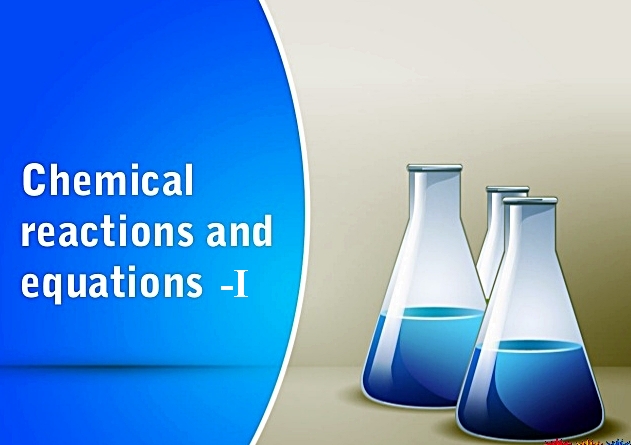Separation of Mixtures
Separation of mixtures depends on the properties of solute and solvent.
1. Filtration:
i. Filtration is a process in which the solute can be separated from the solvent are separated using Filter paper. The difference in the solubility of the solute and solvent is used to separate them in this process. This method is used to separate insoluble substances from liquid.
ii. The substance which is not soluble and remains on the filter paper is called residue while the one which is filtered out is called filtrate.
iii. For example: Sand and water
2. Evaporation:
i. Evaporation is a process which is used to separate a substance that has dissolved in water (or any other solvent).
ii. The use of process of evaporation for separating a mixture is based on the principle one component is volatile (solvent) while other is non – volatile.
iii. We can obtain coloured component from blue/ black ink by this process. Ink is the mixture of dye in water; water evaporates on heating and separates from dye particles.
iv. For example: Salt from water
3. Centrifugation:
i. The mixture of fine suspended particles in liquid can be separated through filtration but it takes time .So we use the process of centrifugation to rapidly separate the mixture. Centrifugation is done by a machine called centrifuge.
ii. Centrifugation is a method for separating the suspended particles of a substance from a liquid in which the mixture is rotated (or spun) at high speed in a centrifuge.
iii. The principle is that the denser particles are forced to the bottom and the lighter particles stay at the top when spun rapidly.
iv. This process is used to separate cream from milk.
v. Applications
a) Used in diagnostic laboratories for blood and urine tests.
b) Used in washing machines to squeeze out water from wet clothes.
4. Separation of Two Immiscible Liquids:
i. The process is used to separate 2 liquids which don’t mix into one another and forms separate layers.
ii. The separation of two immiscible liquids depends on the difference in their densities. Example -Kerosene Oil and water.
iii. Kerosene Oil having low density settles to the top of water and water is easily obtained by opening the stopcock of the funnel.
iv. The principle is that immiscible liquids separate out in layers depending on their densities.
5. Sublimation:
i. The process changing of a solid directly into vapours on heating and of vapours into solid on cooling is called sublimation.
ii. It is used to separate a mixture that contains a sublimable volatile component from a non – sublimable impurity.
iii. The solid substance obtained by cooling the vapours is known as sublimate. The substances like ammonium chloride, camphor, naphthalene and athracene undergo sublimation.
6. Chromatography:
i. Chromatography is a technique used for separation of those solutes that dissolve in same solvent in very small quantities. This separation is based on the fact that though two or more substances are soluble in same solvent (say water) but their solubility may be different.
ii. It can be used to separate dye from ink.
iii. The method for separation is as follows:--
a) Take a thin and long strip of filter paper. Draw a pencil line on it, about three cm from one end.
b) Put a small drop of black ink on filter paper strip at the centre of the pencil line. Let the ink dry.
c) When the drop of ink has dried, the filter paper strip is lowered into a tall glass jar containing some water in its lower part (keeping the pencil line at the bottom). The strip should be held vertical. Please note that though the lower end should dip in water but pencil line should remain above the water level.
d) When the water reaches the top end, the strip is removed from the jar and dried. The paper containing separate coloured spots is obtained.
i. Applications – It is used to separate
a) Pigments from natural colours.
b) Drugs from blood.
c) Colours in dye.
7. Separation of Miscible Liquids (Distillation):
i. This process is used to separate 2 liquids which are miscible.
ii. In this method, we start heating a liquid to form vapour, then cooling the vapour to get back liquid. The liquid obtained by condensing the vapour is called distillate. This process is used for those liquids which have sufficient difference in their boiling points.
iii. The difference in boiling point of liquids should be more than 25 K.
iv. Example- Acetone in water
8. Fractional Distillation:
i. Fractional distillation is a process of separating two or more miscible liquids by distillation, using fractionating column.
ii. A fractionating column is fitted in between distillation flask and the condenser. It has glass beads. These beads provide surface for vapour to cool and condense rapidly.
iii. When the boiling point difference between 2 miscible liquids is less than 25 K, then fractional distillation is used.
iv. Example – Acetone and ethyl alcohol
9. Separation of Gases from Air
Air is a homogeneous mixture of gases and can be separated into its constituents by fractional distillation.
Air
↓
Compress and cooled by increasing pressure and decreasing temperature
↓
Liquid Air
↓
Allow to arm up slowly in fractional distillation column
↓
Gases get separated at different heights
10. Crystallization:
i. The process of cooling a hot, concentrated solution of a substance to obtain crystals is called crystallization. The process of crystallization is used for obtaining a pure solid substance from impure sample.
ii. This is done by following steps:
a) The impure solid substance is dissolved in the minimum amount of water to form a solution.
b) The solution is filtered to remove insoluble impurities.
c) The clear solution is heated gently on a water bath till a concentrated or a saturated solution is obtained. Then stop heating.
d) Allow the hot, concentrated solution to cool slowly.
e) Crystals of pure solid are formed. Impurities remain dissolved in the solution.
f) Separate the crystals of pure solid by filtration and dry.
i. Applications –
a) Separation of crystals of alum from impure samples.
b) Purification of sea water.
11. Water purification system
For purification of water steps are as follows-
a) SEDIMENTATION TANK - Heavy impure particles settle down when water is left for some time.
b) LOADING TANK - Alum is mixed with water. Even small suspended particles settle down.
c) FILTRATION TANK - It has 3 layers of fine sand, coarse sand & tiny stones. When water passes through them, it is further cleaned.
d) CHLORINATION TANK - Chlorine is mixed with water in the tank. It kills germs. Now water is sent to home.
Physical and chemical change
Physical change | Chemical change |
The physical properties such as colour, physical state, density, volume. Chemical properties remain unchanged. | The chemical composition and chemical properties undergo a change. |
No new substance is formed in a physical change. | A new substance is formed in a chemical change. |
A physical change is a temporary change. | A chemical is a permanent change. |
Very little or no energy in the form of heat, light or sound is usually absorbed or given out in a physical change. | A chemical change is always accompanied by absorption or evolution of energy. |
The original form of substance can be regained by simple physical methods. | Original substance cannot be obtained by simple physical methods. |
A physical change is reversible. | A chemical change is irreversible. |
Classification of Matter
I. Matter is of two types – Pure and Impure. Elements and compounds are pure matters.
II. Around 100 elements exist in nature. Out of those, around 92 are natural and rests are man- made elements. Among them 2 elements are liquid in state - Bromine and Mercury whereas 11 of them exhibit gaseous state like hydrogen, oxygen, nitrogen etc. Thus, most of them are solid in nature.
III. Cesium and Gallium are solid at room temperature but tends to change into liquid when temperature increases.
Metals | Non-metals |
Metals are lustrous. | Non-metals do not have lusture. |
They conduct heat & electricity. | They do not conduct heat & electricity. |
They are malleable i.e. they can be beaten into thin sheets. | They are non- malleable i.e. they cannot be beaten into thin sheets. |
They are ductile i.e. they can be drawn into thin wires. | They are non- ductile i.e. they cannot be drawn into thin wires. |
They are sonorous i.e. they produce sound when hit. | They are non- sonorous i.e. they do not produce sound when hit. |
They have high tensile strength. | They have low tensile strength. |
i. Metalloids - They are those elements which have properties of both metal and non-metal. For example - Germanium, Silicon etc.
ii. Difference between Mixtures & Compounds
Compounds | Mixtures |
In a compound, two or more elements are combined chemically. | In a mixture, two or more elements or compounds are simply mixed and not combined chemically. |
A compound is a pure substance. | A mixture is not a pure substance. |
In a compound, the elements are present in the fixed ratio by mass. | In a mixture, the constituents are not present in fixed ratio. |
The constituents lose their identities i.e a compound does not show the characteristics of the constituting elements. | The constituents do not lose their identities i.e a mixture shows the characteristics of the constituting elements. |
In a compound, the constituents cannot be separated by physical means. | The constituents from a mixture can be separated by physical means in most of the cases. |
A compound has a fixed melting and boiling points. | The melting and boiling points of a mixture are not fixed. |










1 Comments
In addition, Aerosol Jet printers can print conformal interconnects on 3D surfaces, eliminating the need for wire bonding . Designed for all ages, Tinkercad is an easy-to-use tool for creating digital designs which might be} able to be 3D printed into bodily objects. 3D printing software is basically used to transform a digital design into a bodily object through a printer or other Quilted Design Duvet Inserts manufacturing machine.
ReplyDelete